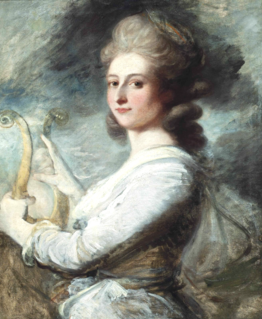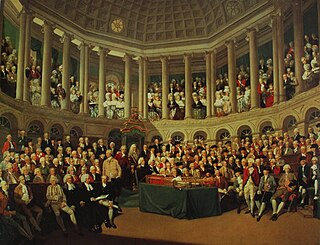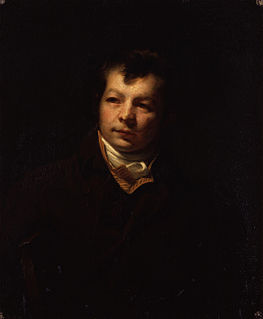


Henry Edridge ARA (1768 in Paddington – 23 April 1821 in London) was the son of a tradesman and apprenticed at the age of fifteen to William Pether, a mezzotint engraver and landscape painter, and became proficient as a painter of miniatures, portraits and landscapes.

Paddington is an area within the City of Westminster, in central London. First a medieval parish then a metropolitan borough, it was integrated with Westminster and Greater London in 1965. Three important landmarks of the district are Paddington station, designed by the celebrated engineer Isambard Kingdom Brunel and opened in 1847; St Mary's Hospital; and Paddington Green Police Station.
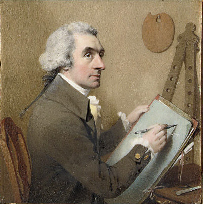
William Pether was an English mezzotint engraver.
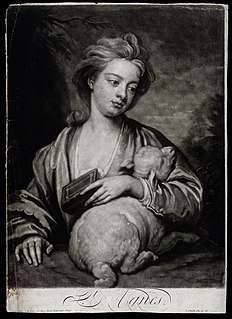
Mezzotint is a printmaking process of the intaglio family, technically a drypoint method. It was the first tonal method to be used, enabling half-tones to be produced without using line- or dot-based techniques like hatching, cross-hatching or stipple. Mezzotint achieves tonality by roughening a metal plate with thousands of little dots made by a metal tool with small teeth, called a "rocker". In printing, the tiny pits in the plate hold the ink when the face of the plate is wiped clean. A high level of quality and richness in the print can be achieved.
His first portraits were on ivory, and he subsequently turned to paper with black lead and India ink to which he added very ornate backgrounds, but he later produced a large number of elaborately finished pictures in water colours with light backgrounds. These were followed by others in which he combined the depth and richness of oil paintings with the freedom of water colour drawings. His subjects included Lord Nelson, the explorer Mungo Park, the Methodist missionary Thomas Coke, the Prime Minister William Pitt and John Wesley at the age of 88.
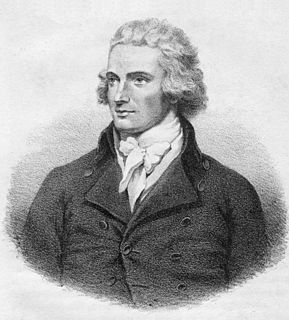
Mungo Park was a Scottish explorer of West Africa. He was the first Westerner known to have travelled to the central portion of the Niger River. He wrote a popular and influential travel book about it titled Travels in the Interior Districts of Africa.

Thomas Coke was the first Methodist bishop and is known as the Father of Methodist Missions.

William Pitt the Younger was a prominent British Tory statesman of the late-eighteenth and early-nineteenth centuries. He became the youngest UK Prime Minister in 1783 at the age of 24. He left office in 1801, but served as Prime Minister again from 1804 until his death in 1806. He was Chancellor of the Exchequer for most of his time as Prime Minister. He is known as "the Younger" to distinguish him from his father, William Pitt, 1st Earl of Chatham, called William Pitt the Elder or simply "Chatham", who had previously served as Prime Minister.
Sir Joshua Reynolds was so taken with one of his miniatures, that he insisted on having it and paid him handsomely for it. This was the sign for Edridge to abandon engraving and become a painter. He did wisely in copying many of the works of Reynolds for study.

Sir Joshua Reynolds was an English painter, specialising in portraits. John Russell said he was one of the major European painters of the 18th century. He promoted the "Grand Style" in painting which depended on idealization of the imperfect. He was a founder and first president of the Royal Academy of Arts, and was knighted by George III in 1769.
He first established himself in Golden Square and in 1801 moved to Margaret Street, Cavendish Square, where he remained for twenty years. With the desire to indulge his taste for landscape painting, which he cultivated under Thomas Hearne, he made two excursions to Normandy and Paris, in 1817 and 1819, producing many interesting drawings which were subsequently exhibited. Three of his landscapes are now in the South Kensington Museum, and his sketches on the first Lord Auckland and of Robert Southey are in the National Portrait Gallery. He became a student at the Royal Academy in 1784 and was elected an associate in November 1820. Unhappily he had but a very short time to enjoy this distinction, for he died from an attack of asthma on 23 April 1821.

Normandy is one of the 18 regions of France, roughly referring to the historical Duchy of Normandy.

Paris is the capital and most populous city of France, with an area of 105 square kilometres and an official estimated population of 2,140,526 residents as of 1 January 2019. Since the 17th century, Paris is one of Europe's major centres of finance, diplomacy, commerce, fashion, science, and the arts.

Robert Southey was an English poet of the Romantic school, one of the Lake Poets along with William Wordsworth and Samuel Taylor Coleridge, and England's Poet Laureate for 30 years from 1813 until his death in 1843. Although his fame has been eclipsed by that of Wordsworth and Coleridge, his verse still enjoys some popularity.



